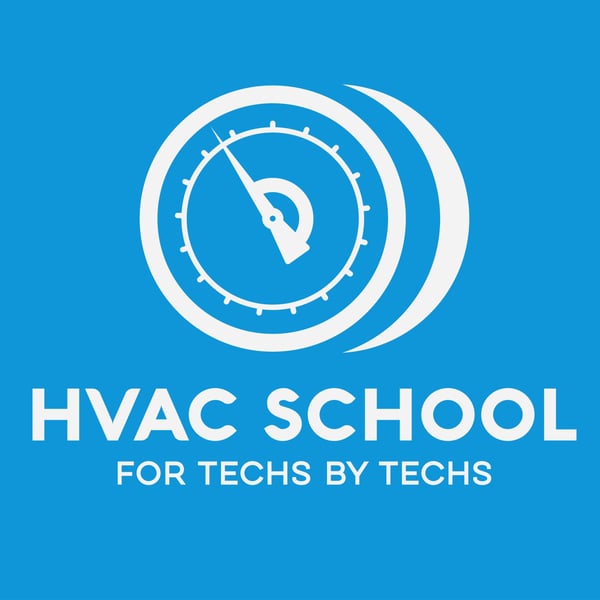Furnace Commissioning Part 1 w/ Jim Bergmann - Input / Rise
HVAC School - For Techs, By Techs
Bryan Orr
4.8 • 985 Ratings
🗓️ 15 March 2018
⏱️ 53 minutes
🧾️ Download transcript
Summary
In today's podcast episode, Jim Bergmann covers furnace commissioning, including setting up furnace input, clocking the meter, setting temperature rise, and much more. The goal of commissioning is to optimize a furnace's efficiency; we want to make sure we correctly engineer the intake/exhaust system to extract as much heat from the flue gas as possible.
The commissioning process for an 80% furnace is pretty similar to that of a high-efficiency furnace. Checking gas pressure, setting temperature rise, and combustion analysis are critical procedures when commissioning both furnace types. Moreover, you must know the heat content of the fuel and the amount of fuel going into the furnace before you can determine the correct input. There is an acceptable range for gas pressure, typically within 10% of the specs (usually 3.5" wc, so the acceptable range is 3.2-3.8" wc). Both the gas pressure and heat content let you know how efficiently the furnace is firing.
When checking the input, you must clock the gas meter; you do that by timing a single revolution of the gas meter and determine how much fuel goes into the appliance during that time period. You can't have the water heater on at the same time that you are clocking the meter. When you clock the meter, you can start with a gas pressure of 3.5" wc and go up to 3.8" wc. When clocking the gas meter, you may realize that the orifices are incorrectly sized.
Ideally, you want your temperature rise to be in the middle of the manufacturer-specified range. For example, if the range is 40-60 degrees, you would want your temperature rise to be close to 50 degrees).
Jim also discusses:
- Weighing condensate
- Primary vs. secondary air
- Excess air
- Changing/resizing orifices
- Other gas lines in the home
- Ductwork sizing for temperature rise/CFM
- Filter considerations
If you have an iPhone, subscribe to the podcast HERE, and if you have an Android phone, subscribe HERE.
Transcript
Click on a timestamp to play from that location
| 0:00.0 | This episode of the HVAC School Podcast is made possible by our partners. |
| 0:17.0 | Rector Seal, Carrier, and Mitsubishi Comfort. |
| 0:21.0 | I also want to mention Dan Foss is coming back on board. I'm going to be helping them with some videos and we're going to be doing a little bit with them. So thank you to Dan Foss. And also thank you to Parker Sporlin and their revolutionary, dare I say revolutionary, |
| 0:35.6 | Zoomlock fitting, which is a very interesting new product. |
| 0:39.6 | You can find out more by going to Zoomlocklock Roadshow on that. |
| 0:43.4 | But thank you to these partners, Carrier, Mitsubishi Comfort, |
| 0:47.3 | and Rector Seal for making this possible. |
| 0:50.0 | And thank you for making it possible |
| 0:51.8 | by listening to the podcast. |
| 0:53.0 | Meet Zoom Lock, the 10 second flame-free refrigerant fitting from Parker. |
| 0:58.0 | Reduce labor costs by 60% with no braising, no flame, and no fire spotter. |
| 1:02.9 | Discover how Zoomlocked can help you be more efficient |
| 1:05.8 | and productive. |
| 1:06.6 | Visit ZoomLock.com for more information. And now, the man who stays humble because he has two teenage sons who always let him know |
| 1:21.4 | how much smarter they are than him, |
| 1:23.5 | Brian Orr. |
| 1:25.0 | Yeah, if you have teenage children, you know, you know what I'm talking about. |
| 1:30.0 | If you don't, then, uh, don't even try. This is the HVAC school |
| 1:35.8 | podcast and I am Brian and this is the podcast that helps remind you of some |
| 1:39.4 | things about the HVACR industry that you might have forgotten as well as |
| 1:42.3 | possibly reminds you of some things |
| 1:43.9 | that you forgot to know in the first place. |
... |
Please login to see the full transcript.
Disclaimer: The podcast and artwork embedded on this page are from Bryan Orr, and are the property of its owner and not affiliated with or endorsed by Tapesearch.
Generated transcripts are the property of Bryan Orr and are distributed freely under the Fair Use doctrine. Transcripts generated by Tapesearch are not guaranteed to be accurate.
Copyright © Tapesearch 2025.

